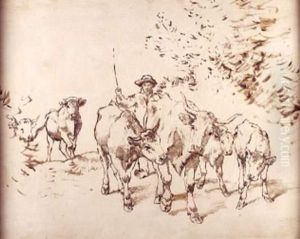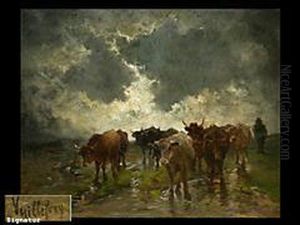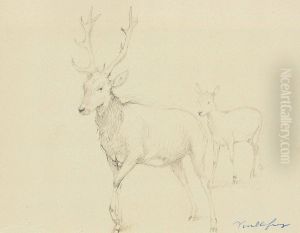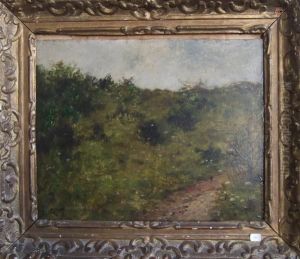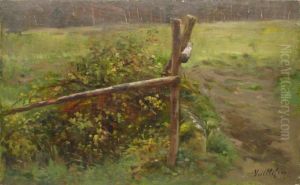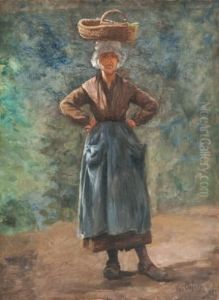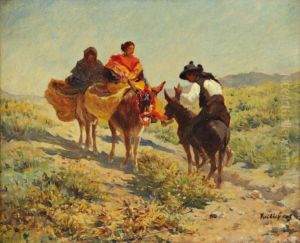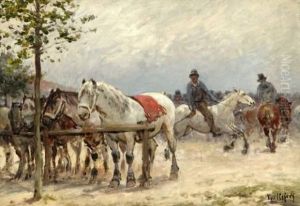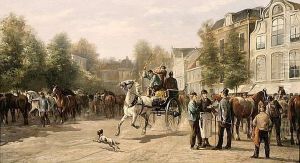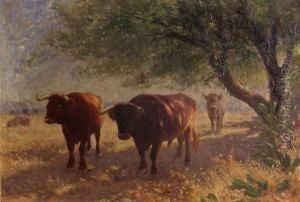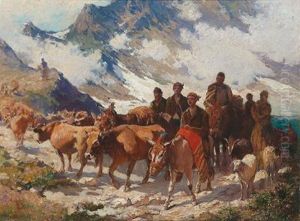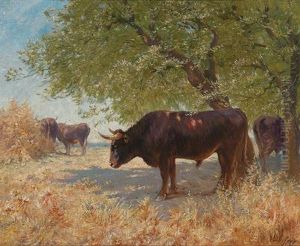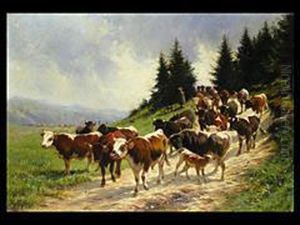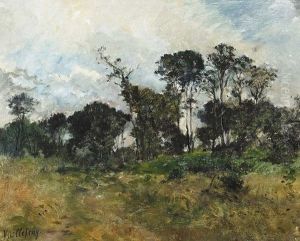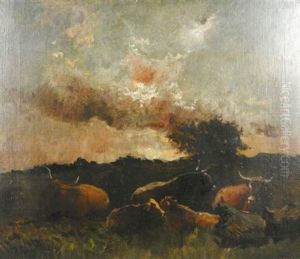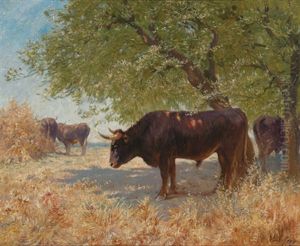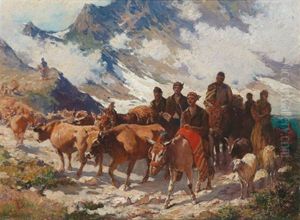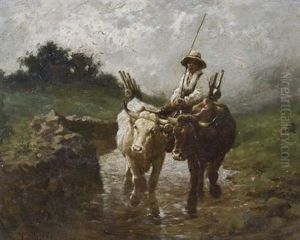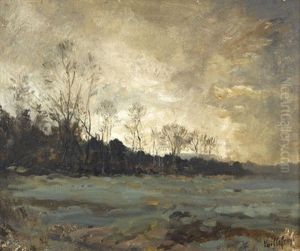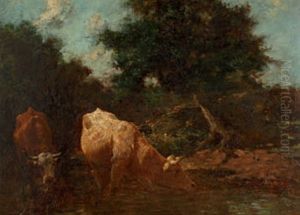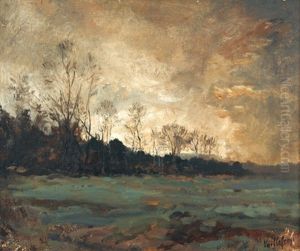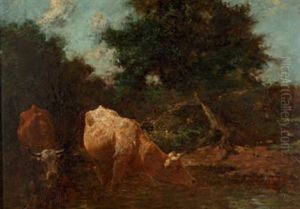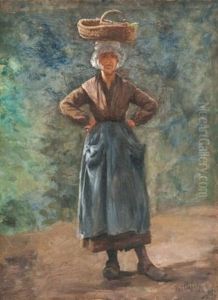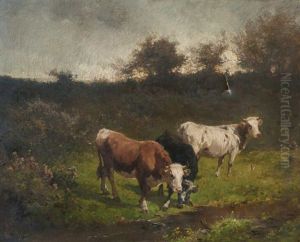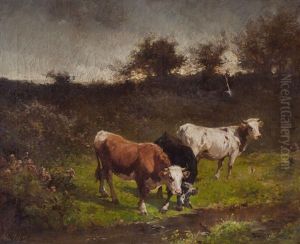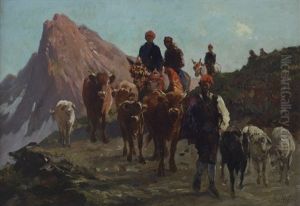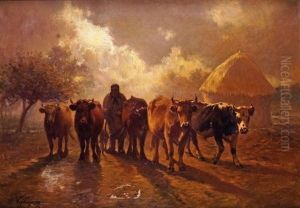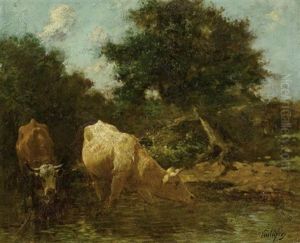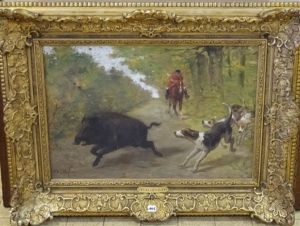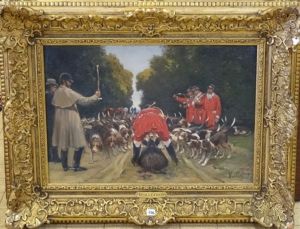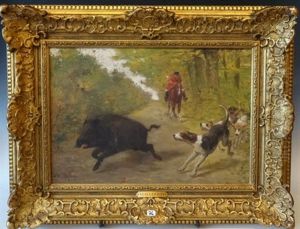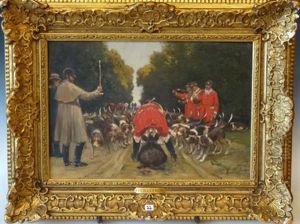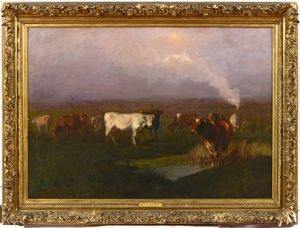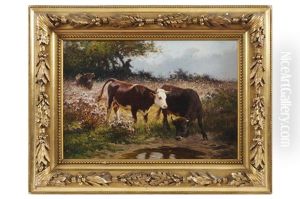Felix Dominique De Vuillefroy Paintings
Felix Dominique De Vuillefroy was a French painter born on July 2, 1841, in Paris. He is best known for his landscapes, animal scenes, and his ability to capture rural life in France with a remarkable sense of realism and emotion. De Vuillefroy was a student of the famous painters Charles-Émile Jacque and Camille Corot, who were both influential in the Barbizon school, a movement that emphasized the beauty and simplicity of nature.
De Vuillefroy's art was deeply influenced by his teachers, and he soon developed his unique style, blending realism with the Barbizon school's focus on nature. His works often depicted the countryside, including scenes of peasants working the land, animals in their natural habitats, and serene landscapes. He had a particular fondness for painting cows, which became one of his signature subjects.
Throughout his career, De Vuillefroy exhibited his works at the Paris Salon, the official art exhibition of the Académie des Beaux-Arts in Paris. He received numerous awards for his paintings, including medals at the Salon and recognition at international exhibitions, such as the Exposition Universelle. His success at these prestigious events helped to establish his reputation in France and abroad.
De Vuillefroy was also a member of the Société des Artistes Français, an association that played a crucial role in organizing the Salon exhibitions. His involvement in this society and his contributions to the French art scene were significant, as he helped to promote traditional painting techniques and subjects during a time of rapid change in the art world.
Felix Dominique De Vuillefroy died on May 25, 1915, in Paris. Today, his works are held in several museums and private collections around the world, where they continue to be admired for their beauty, technical skill, and portrayal of rural French life at the turn of the 20th century.
